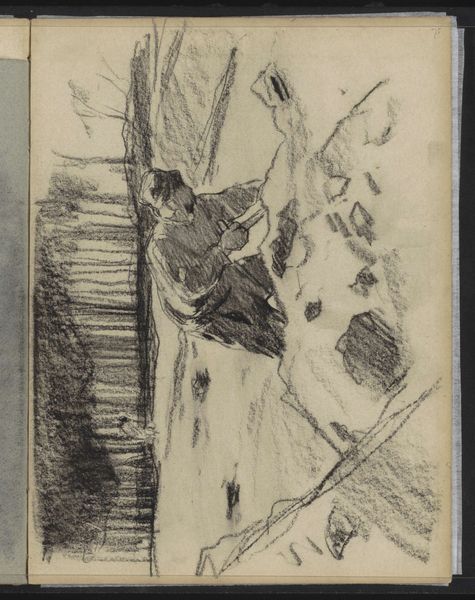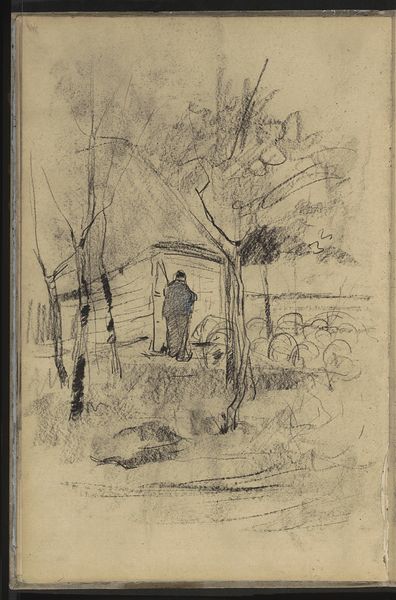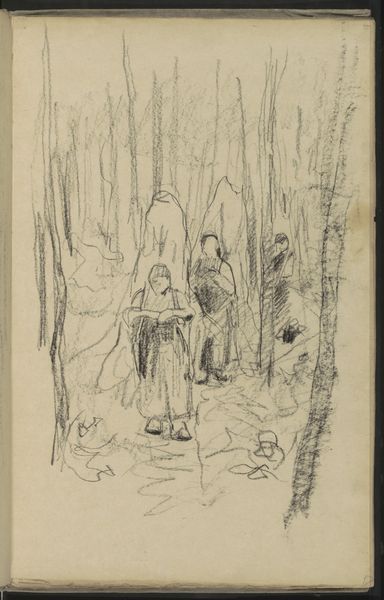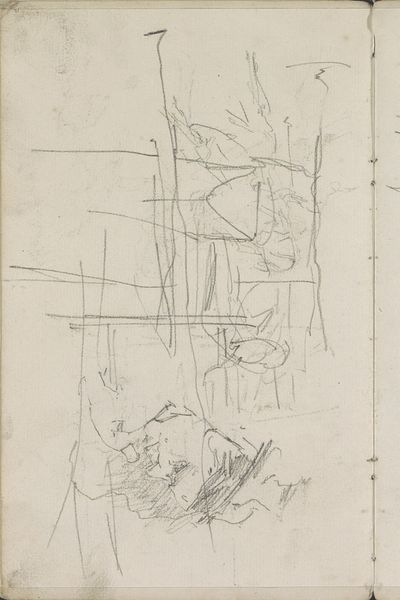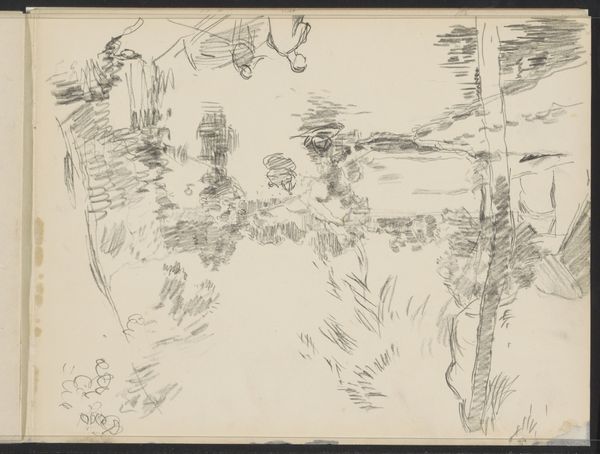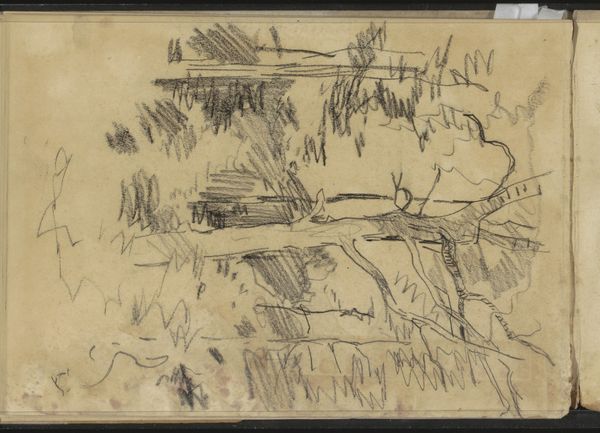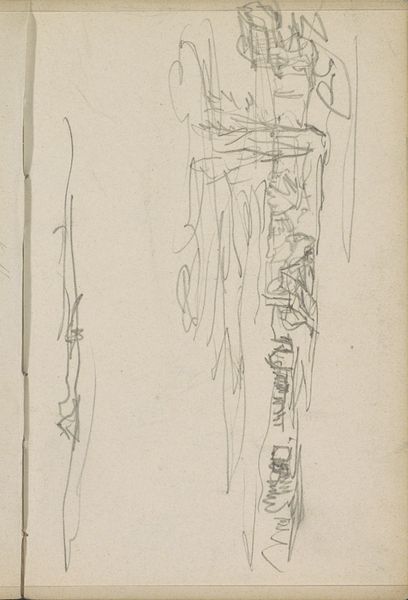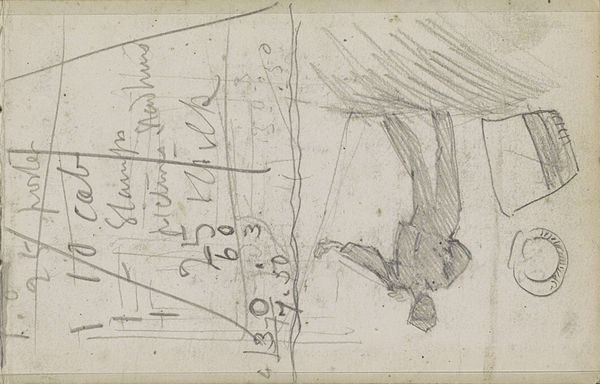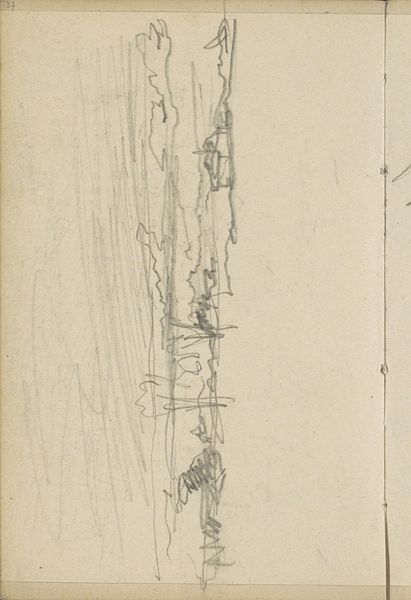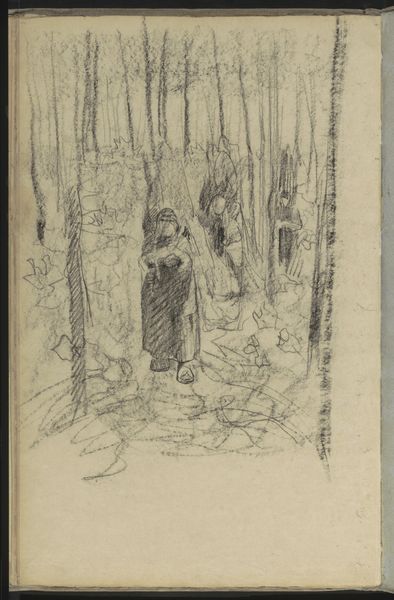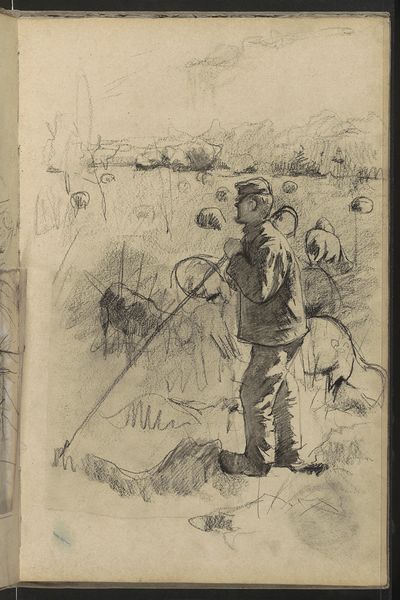
drawing, pencil
#
drawing
#
pen sketch
#
landscape
#
figuration
#
forest
#
pencil
Copyright: Rijks Museum: Open Domain
Editor: This is Willem Witsen’s "Young Women with Bundles of Branches and a Forest View," created around 1884 to 1887. It's a pencil and pen drawing. It's quite a delicate work, but the subject matter seems to hint at labor and the materials these women are gathering from the forest. What’s your perspective on this drawing? Curator: Looking at the lines, the hatching and the quick, almost frantic marks suggest a real urgency to capture the scene. Consider the cost of materials in the late 19th century, especially paper, pencils, and pen ink. Do you think Witsen's choices—a drawing rather than painting, the immediacy of the marks—might relate to a specific market or audience for his art? Editor: That’s a really interesting way of thinking about it. I guess I hadn’t considered the economic factors affecting the choice of media. It makes sense that drawing may have been more economical. Does the content speak to its market? Curator: The scene is quotidian but dignified. Ask yourself about the social status of women carrying branches. Could this drawing have been targeted towards the growing urban middle class who were maybe romanticizing rural life, yet consuming the wood the women were laboring to collect? There’s a dialectic at play between representation, labor, and consumption. Editor: So, by analyzing the materials, the subject, and the potential audience, we can understand more about the cultural context surrounding its creation? Curator: Exactly. It allows us to move beyond just the aesthetic qualities and think about the social and economic forces at work. I encourage you to also question: what commentary might be embedded within Witsen’s choices to highlight or conceal within the social structures impacting labor? Editor: This perspective has changed how I see the drawing completely. It’s not just a landscape with figures; it's a statement, however subtle, on the lives and work of these women. Curator: And remember to question whose stories are told, whose are omitted, and how materials contribute to this narrative.
Comments
No comments
Be the first to comment and join the conversation on the ultimate creative platform.
